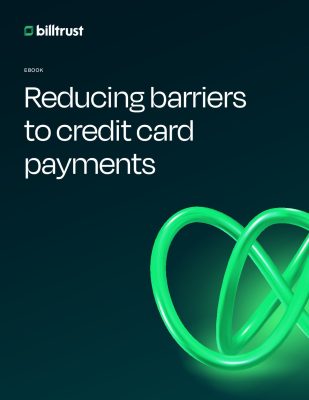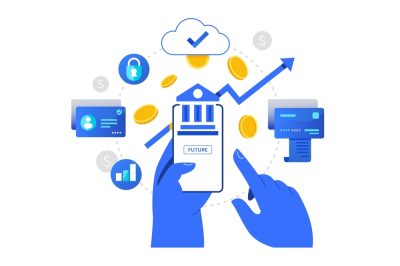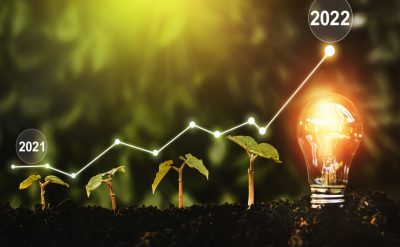Rapid technology development and increased demand for better banking services are transforming the paper-based banking system drastically. The major challenge for the consumers is to cope with new digital banking systems and learn about them, banks and businesses are finding innovative ways to make the banking process easier and governments are developing regulations to define the digital banking system inside a set of rules. The consumers are moving from the cash-based economy to the card-based payment system, the usage of contactless payment devices that even includes smartphones as the payment technology. In the future, it might become possible that we see Bitcoin used for payment with the implementation of big data and Artificial Intelligence. Such shifts in the technology offer an opportunity that can be perceived as beneficial and offer subjective benefits for consumers. The more efficient and secure the technology, the more it improves the quality of security with greater convenience while enabling financial institutions to profit. But for the digital technology that is being promoted for digital banking, the transitions towards the cashless world have major consequences for the underserved sector of the society?
Many of the financial institutions around the world are moving towards the cashless economy, as around the world cash machines and physical branches are being closed down. To improve the banking system consumers are pushed towards using the digital banking infrastructure. Over the last decade, we are seeing an exponential rise in the in digitalization of the banking system and banks want the consumers should access the broader offerings of digital economy using the digital banking setup, It is synonymous how Google wants its consumer to access the broader parts of the internet using it’s a search engine. However certain critical questions must be answered before we make the shift from the cash-based economy to a digital economy where it’s set to improve the reach of the banking services to all the customers or it’s earning profit through the digital banking infrastructure.
Getting the consumers to travel from the banking system to digital banking system
Many of the financial institutions around the world are nudging their consumers towards the digital banking infrastructure. Here are five fundamental concepts that will be driving the consumers towards the digital economy
1. Mobile first is not an option.
2. We just don’t value convenience.
3. Physical branches aren’t going to
4. Users aren’t just becoming disengaged they are shifting their preferences.
In behavioral economics, a nudge is offering the consumers better options than the other, so that the consumer accepts the alternative option. Most of the financial institution are increasing their cover for digital transactions and reducing the physical transaction options to promote the consumers to use the online channels. A survey was conducted in 2017 added that 15 percent of the global population is mobile dominant. A sharp increase from 10 percent just a year ago. This gives an opportunity for digital bankers to think differently when the consumers are shifting towards the banking options that can be easily accessed through smartphones. A better mobile experience can add value to the banking sector, as consumers tend to use the same mobile applications over and over without being affected by the experience. Most of the consumers across the globe also added that they have more than one banking accounts but only one primary account, they value the certain physical attributes such as previous banking experience and proximity of the physical branch that make them select the bank. Many of the consumers also feel that the physical banks offer better face value to the products and services such as loans, insurance, and various investments options rather than an online channel. Consumers today still value the physical interactions that they have with banks during using various services. Many of the current pool of consumers don’t use the banking facility as frequently as they used to, many of the consumers agreed that they using the banking system once in the year and then forget about it or the process is too automated that they don’t even realize that they are performing it. The need for a different product makes then analyze the current banking facilities and understand the outcome of such banking facilities.
Maintaining the balance between the cash and digital
The digital economy will bring the dangers of underserving the under-served sector of the economy, without the access of digital banking services or unable to access the credit will find such consumers pushed out from the economy. Many of the current banking experts think that the current marginalized society around the world living below the poverty lines need to be included in the banking system through the paper-based system and provide them opportunities that governments provide. Many of the consumers feel that the cash relating economy on one hand and digital solutions, on the other hand, need to be clubbed together to improve the banking sector. According to the banks moving the transactions online, the amount of data available about one’s physical habits along with purchasing habits can assist the banking sector to determine the best products available for the consumer. However many of the consumers using the digital banking system feel that the current banking infrastructure still needs to improve the system of data storage while dealing with transaction and payment history. Having hard cash has also become solutions for the consumers to deal with system failures in case of emergency.
Conclusion
The world over the last few years has seen greater coordination between the banks and governments to implement the laws of the land while dealing with frauds and tax evasions. Governments have to manage the balance between cash-based economy and developing the digital economy. In every market, the needs differ significantly and according to that, each distribution channel offers numerous pros and cons. It’s imperative that when we start adopting new digital economy can the underlying infrastructure handle all the responsibilities and will it able to support the local economic efforts.
To know more about financial technology, you can download our whitepapers.



























































